Further information
We have put together some information sheets to help you get the most out of your lessons.
Please click the relevant image to download the information for each pool.
We have put together some information sheets to help you get the most out of your lessons.
Please click the relevant image to download the information for each pool.

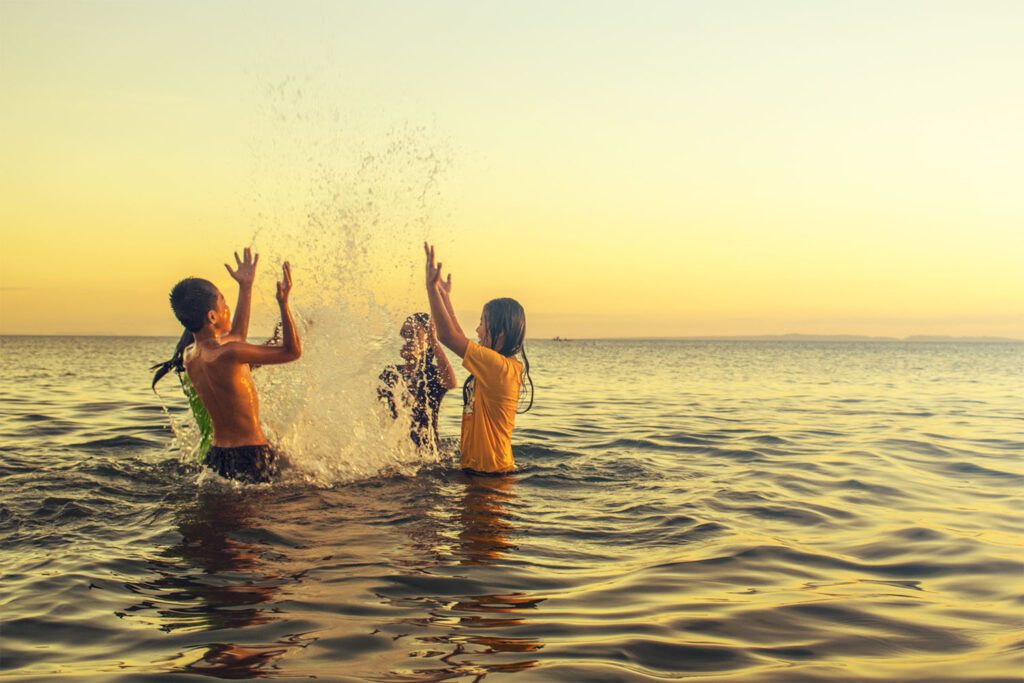
Swimming is good for children in so many ways but some of them may surprise you.
Let’s start with the serious stuff.
Drowning is still one of the most common causes of accidental death in children. Living so close to the coast, not a summer goes by when we do not hear of a tragedy in our seas, rivers, lakes, or reservoirs. Being able to swim is an essential life skill and could one day save a life.
Confidence can sometimes be mistaken for competence. We follow the Swim England Learn to swim stage 1-7 framework which once completed give the children the confidence to swim and the competence to swim all 4 strokes up to 100m & skills required for personal survival to give them the best chance if they found themselves in difficulty.
https://www.swimming.org/learntoswim/water-safety-code/
Swimming and aquatic activities are lots of fun for people of all ages. From splash parks and water parks to pool and open water swimming. We also see friendships develop in the pool and the viewing area that extend into play dates and lunches. We often see swim families hiring the pool together for fun sessions during the holidays.
https://swim2swim.com/private-hire
Swimming is great for improving flexibility and posture through moving deliberately and repetitively whilst buoyant. All muscle groups are strengthened leading to better balance and coordination. Swimming is a low impact sport; children have less chance of injuring joints and bones whilst swimming and can generally exercise for longer than other high impact sports.
Swimming improves lung capacity and helps keep the heart healthy. As the heart rate climbs during swimming you breathe harder, over time the lungs develop to meet these demands increasing lung capacity and heart strength.
Swimming can aid digestion and improve sleep. The digestive system needs to move for it to function normally. Swimming offers the movement to help work food through. You may have noticed how effective this is after your lessons!! Swimming is a full body workout requiring lots of energy. Children who exert lots of energy during the day generally require more sleep to re-charge for the next one.
Our baby and pre-school lessons are planned and structured to support developmental milestones, our teachers are fully qualified and trained in delivering these lessons. Swimming lessons help the children develop confidence and belief in their abilities as they achieve more and more in their lessons. They trust their teachers and communicate with them and their swimming friends. Nothing beats watching a child blossom from a nervous swimmer into a confident swimmer demonstrating strokes to their friends.
Exercise is proven to have a positive impact on children’s mental health. Studies have shown that it not only lowers levels of stress and anxiety as well as higher levels of positive self-image and wellbeing. Swimming helps to boost endorphins leading to increased feelings of happiness and other feel-good emotions.
Swimming lessons are a great way of developing children’s social interactions and skills. They often involve being part of a group of children who have never met and of possibly different ages. The lessons are run by engaging, friendly teachers and often involve an element of play / fun activity. The children see each other week after week, developing bonds and friendships.
Once a child can swim a whole new range of sports and activities open up to them including Water Polo, Synchronised Swimming, kayaking, scuba diving, surfing, sailing and triathlon
Did you know? – You need to be able to swim to be an astronaut!
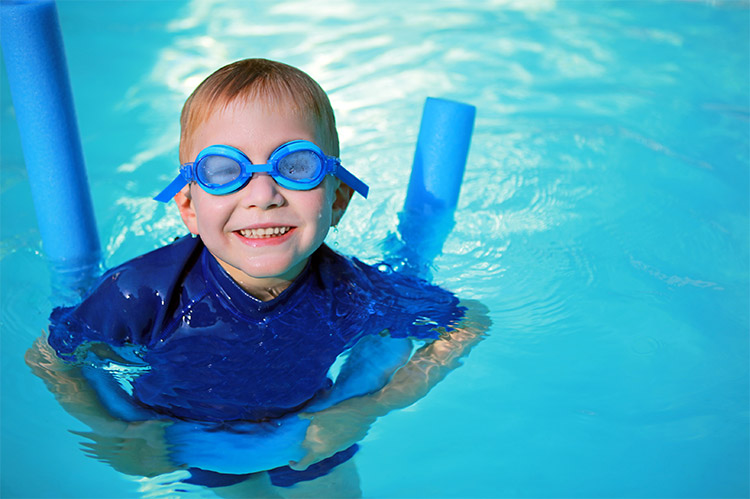
There are a wide variety of buoyancy aids out there all which aid floatation and can support children when in a swimming pool. It is important to note that these are not safety devices and should always be used under direct and competent supervision.
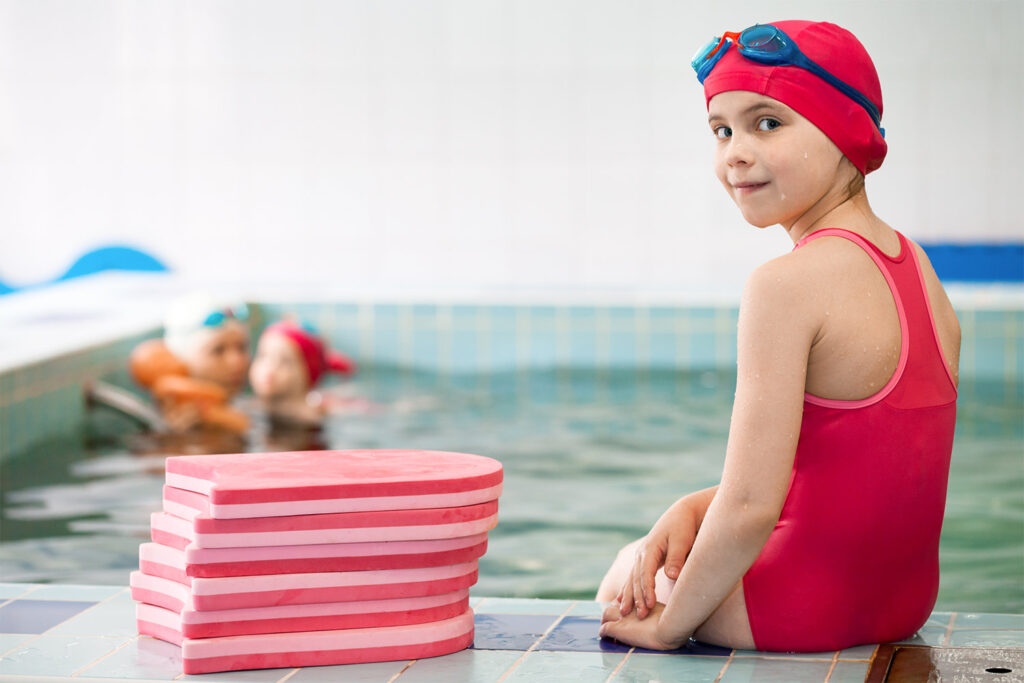
In our swimming lessons we work on children achieving a horizontal body position, experiencing their own balance and buoyancy and rotation to enable them to be confident independent swimmers. This is done using a variety of aids, support, guided discovery, and independent swimming.
We use noodles, floats (kickboards), and arm bands/ arm discs as appropriate. It is important to remember that particularly with pre-school children adult support can be just as valuable. There are lots of hold and moves in baby and pre-school swimming that you can do together which will build water confidence, develop connections, and supports developmental milestones.
Another thing to note is that even if your child swims independently of aids during their lessons they may get tired swimming after hours in the pool on holiday. Although we don’t use them in our lessons as they do not enable the swimmer to achieve the best body position Lifejackets and buoyancy vests can be particularly useful when on holiday or in the pool for fun sessions. Buoyancy aids play a crucial role in building confidence, safety, and skill development in the water.
Building Confidence: Buoyancy aids can be great confidence boosters, especially for beginners. The fear of sinking or not being able to stay afloat can hinder learning and progress. Buoyancy aids provide the necessary support, allowing swimmers to focus on mastering techniques.
Safety First: Buoyancy aids provide extra buoyancy helping swimmers maintain a horizontal and secure position in the water. This is particularly useful for young children who may not yet have the strength and coordination to swim unaided.
Skill Development: Buoyancy aids can help with the gradual development of swimming skills. As skills develop and swimmers gain confidence, the reliance on aids can be reduced, smoothing the transition to independent swimming.
Arm bands: a useful aid for young children who are starting to “struggle” against the supporting adults hold and are looking to gain independence. Also useful for older swimmers in our Learn to Swim Programme who require a little more confidence in trusting the noodle. It is important that the arm bands are of the appropriate size for the weight of the swimmer. Swimmers using arm bands can float and use both their arms and legs when developing their strokes. Arm bands are not used for babies under a year or where swimmers are not using their limbs to propel themselves in the water.
Swim Discs: like armbands although they are made of closed cell foam and will not puncture. They often come in 3’s; the number of discs on each arm can be reduced as the children become more confident. It is important that the correct sized discs are used as they are not suitable for older / heavier swimmers.
Noodles: a versatile swimming aid which can be used in a variety of ways. These are suitable for adults and children. Noodles provide support for the upper body and can be placed across the chest, under the hips, out in front, around the back under the head. They can be used as speed boats, cow horns and even sea horses. Noodles are great for beginner and improver swimmers as they provide the buoyancy required to enable the development of the strokes.
Floats (kickboards): Another great aid for swimming lessons, particularly for improver and advanced swimmers. These can be used for drills to build stamina and to isolate limbs to develop technique.
Using buoyancy aids into swimming lessons helps to create a positive and effective learning environment, enabling swimmers overcome fears, build confidence, and develop essential skills.
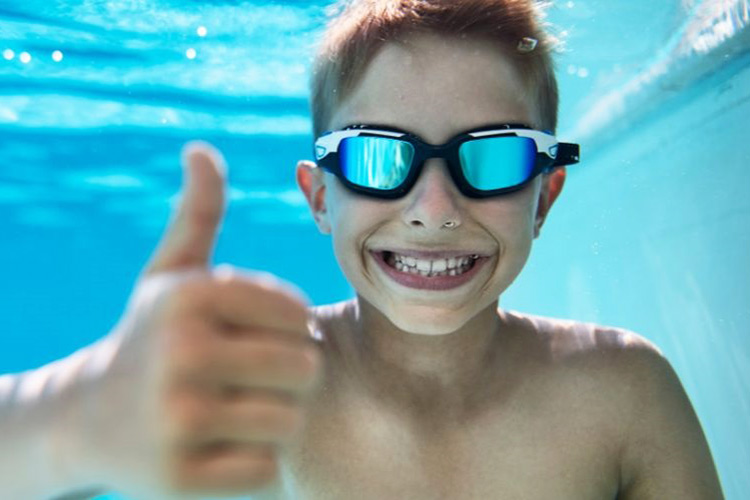
Everyone knows that exercise is great for children’s physical development but it’s also great for brain development and mental health too. Swimming for children is a fun way to exercise and provides all the benefits to help maintain a happy brain too.
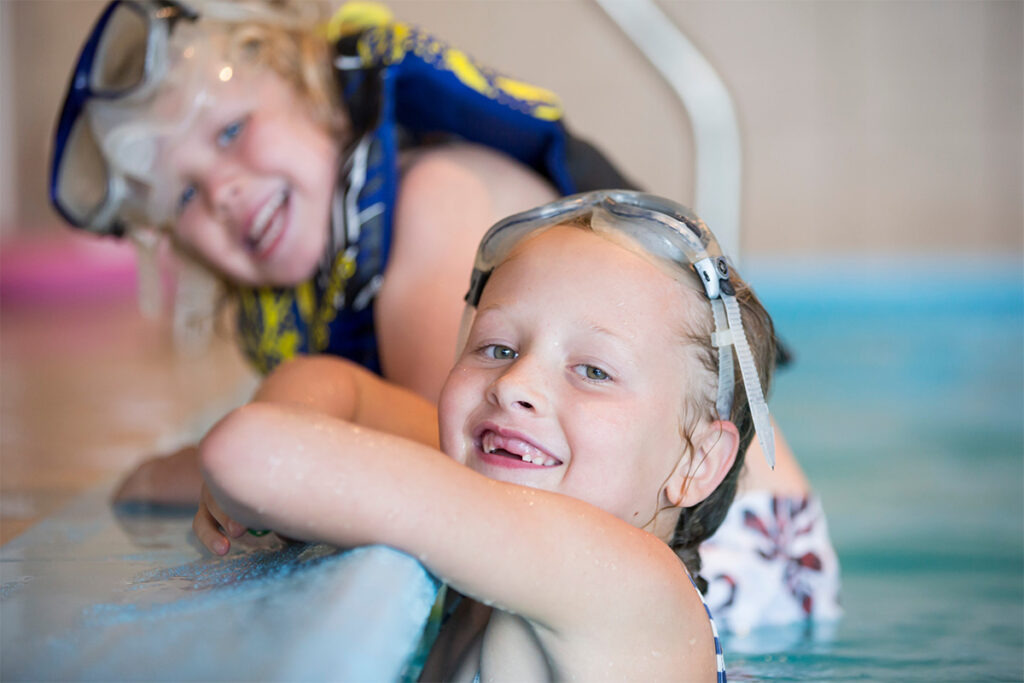
Swimming contributes to brain development by boosting hormones helping with cell growth and the creation of neurons. Studies have shown that fit children tend to have greater brain volume in the hippocampus (the area of the brain associated with memory) This helps the children’s ability for long term retention important for those swimming skills and of course also helps them remember the fun they have in their lessons, ready to do it all again the following week.
Swimming is a fun activity and group swimming lessons are a great way for children to develop their social skills. Skills are developed through structured play activities and swimming practices. Children learn to take turns, work in pairs and teams, interacting with each other and the teachers. Swimming lessons can open the children up to a new circle of friends besides those they see every day at school. We often hear the children chatting in the corridor about meeting for lunch, playdates in the holidays and invitations to birthday parties.
As adults we know how great it feels when we achieve something. Imagine as a child the confidence boost you would get swimming for the first time without buoyancy aids or jumping in without support. Overcoming fears and achieving goals all contribute to building children’s confidence. The confidence achieved through swimming can then overspill into everyday life, boosting self-esteem and creating a positive outlook that will benefit them not only in the pool, but at home in school and on the sports field.
Although no one likes to imagine children suffering from stress, some children can suffer anxiety and low mood. Swimming can help increase endorphins and mood boosting chemicals in the brain. Swimming works all the muscles in the body, helping your children use lots of energy. This in turn can lead to longer uninterrupted sleep, helping them to wake up feeling refreshed and better able to face whatever the day ahead holds.
Happy swimmer
Happy mind

Have you sat at your children’s swimming lessons watching the swimmer’s faces as they achieve a new skill, master something they have been struggling with or jump in the pool on their own for the very first time. Do you marvel at the teacher’s patience, imagination and skills and think “I would like to do that?
Swimming teaching is a very rewarding career, and nothing beats seeing children enjoying themselves in the water and growing in confidence to become competent swimmers. The reality is though that its not always an easy one.
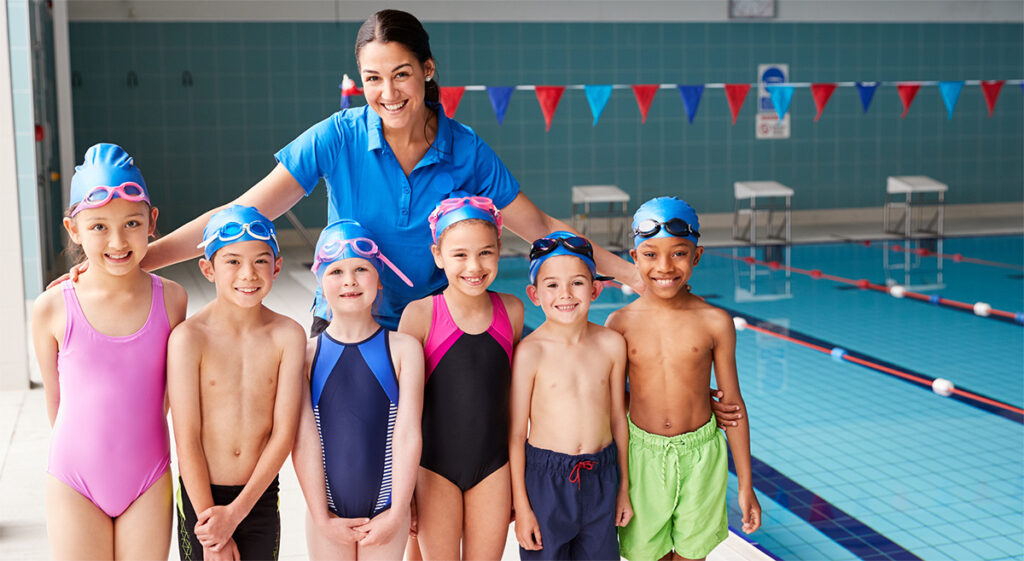
There are 2 awarding bodies that provide Swim Teacher qualifications, Swim England (SE) and the Swimming Teachers Association (STA). To become qualified to teach swimmers from beginners to advanced this is a two-stage process for both bodies. More information can be found here:
https://swimenglandqualifications.com/
https://www.sta.co.uk/become-a-swimming-teacher/
It is always worth looking at employers in your area as some will only accept qualifications from one of the awarding bodies.
In addition, to work as a swimming teacher you will need a teachers rescue qualification, safeguarding certificate, and an enhanced DBS to work with children. You will also need membership of the Institute of Swimming (IOS) or STA.
You don’t need to be of club swimming standard, but you do need to able to swim and have a good understanding of the 4 strokes as accurate demonstrations are critical.
If you would like to teach babies and pre-school children, there are additional qualifications for those too also offered by SE or the STA.
There are also a series of coaching qualifications offered by SE if you want to coach swimmers at Club level.
Both SE and the STA run regular training for your continuing professional development. These could be anything from swimming games to correcting faults. CPD’s vary in cost too, there are many free CPD’s available but can cost up to £60.
If you click on the above links both SE and the STA, say that hours are flexible, and you can fit them in around your family life/ other commitments. This may well be the case but as most swimming lessons are after school and at weekends, a willingness and flexibility to work these hours will give you greater chances of getting a job in the industry. There are opportunities for daytime work running parent and child classes and school lessons, these are highly sought after hours and only make up a very small proportion of lessons.
Another thing to bear in mind is that a growing number of swim schools swim throughout the year including on school and bank holidays. Continuing with swimming lessons throughout the year has been proven to consolidate skills learnt and helps children progress quicker. It is no longer a term time only profession.
Shifts vary in length from an hour & on occasion up to 6 hours but most commonly between 1 and 4 hours.
Swimming teaching is rarely a full-time job and often hours need to be built up. Being flexible and being available for cover is good way of getting a way in to a swim school and then being considered for hours when they become available. It is not unusual for teachers to work for several swim schools with just a few hours at each one.
Swimming teaching pays competitively and is usually an hourly rate either on an employed or self-employed basis. Check what additional benefits you will be receiving e.g., pension, holiday pay etc.
Some swim schools may have a position that not only includes swimming teaching but could include other duties such as reception, lifeguarding, cleaning etc. The hourly rate for these positions is generally lower but the shifts often longer.
Although you can teach swimming lessons once you have achieved the required qualifications nothing beats experience. Work as an assistant alongside as many teachers as you can to broaden your knowledge and create a toolbox of techniques, games, and activities to help the children achieve the desired outcomes. Volunteering at your local swim club is another great way of building your knowledge of teaching / coaching at a higher level.
Effective communication is an essential part of being a swimming teacher. Good verbal communication skills are required when delivering the lessons, this should be appropriate to the age and level of swimmers. If you are working with / as an assistant, it is important that communication between teacher and assistant is effective and sufficient to ensure you are both on the same page.
Physical communication is also a key requirement. Ensure your demonstrations are accurate and appropriate and an aid to learning.
Many lessons are conducted in the water, be prepared to put your face in, disappear under to demonstrate and get your hair wet. Don’t expect a swimmer to do something you are not prepared to do yourself.
Have bags of it. The best teachers are the ones with passion who never want to stop learning. There is a wealth of resources out there from face book groups, you tube videos books and courses.
If you think it’s the job for you. Give it a go, you won’t regret it.
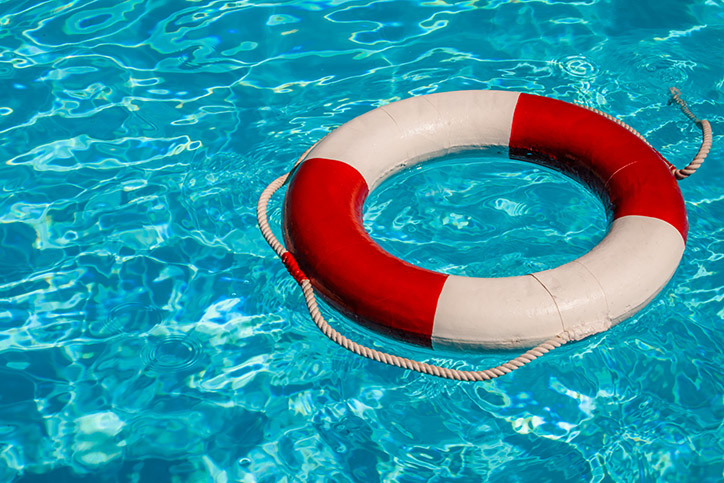
Water safety is a fundamental part of our swimming lessons. From entering and exiting the water safely to personal survival sessions for our more advanced swimmers, we offer plenty of practical guidance for swimmers of all ages and abilities who want to make sure they never place themselves at undue risk when they’re in the pool, at the beach, or even taking part in outdoor swimming.
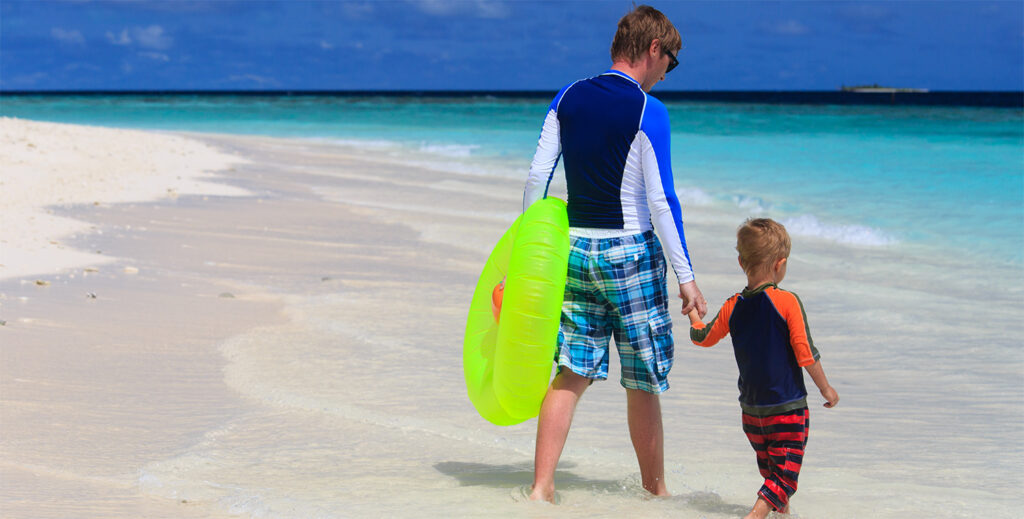
We are very lucky to live close to the coast and we have several inland water options too, so we know that many of our customers will spend much of their free time in and around water. With this in mind, it’s SO important that children learn how to keep themselves safe in open water, as swimming in the sea, rivers and lakes is very different to swimming in the pool.
We are also very fortunate that Swim Safe offers FREE open water sessions locally. Many of our swimmers have attended these sessions over the years and we have had very positive reports.
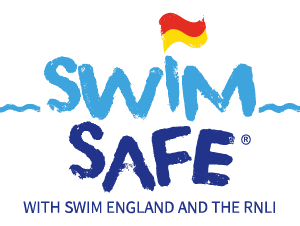
The Swim Safe programme was created back in 2013 as a joint venture between Swim England and the RNLI. Working closely with regional delivery partners, it provides hour long sessions throughout the summer that are delivered by trained instructors and hosted at a variety of outdoor water locations across the UK, including many popular beaches and inland sites.
Essentially, Swim Safe teaches children where it’s safe to swim, how to float, and what to do if they or someone else get in trouble – all key survival skills that we believe everyone should be aware of, regardless of their age or their swimming experience.
If they want to take part, children must be aged between 7 and 14 and able to swim 25 metres unaided. This usually means they would have had to achieve Stage 6 of Swim England’s Learn to Swim Pathway. Please speak to us if you’re not sure whether your child or children are suitable for Swim Safe.
Interested in booking your little one in for a Swim Safe activity in North Essex? Sessions are held in the summer holidays at Clacton and Harwich beaches. Although spaces might be available on the day, it is advisable to book in advance.
Booking opens approximately 6 weeks before the sessions. Please note that a parent or teacher must be present throughout the session. More details on Swim Safe, along with information on how to book your place(s), can be found here!

It’s that time of year when families are eager to enjoy the better weather and are looking for fun activities to do together.
Family swimming is a great option for family members of all ages, all year round – and the good news is, it isn’t dependable on the weather, because everyone is guaranteed to get wet, regardless of whether it’s blazing hot or drizzling with rain!
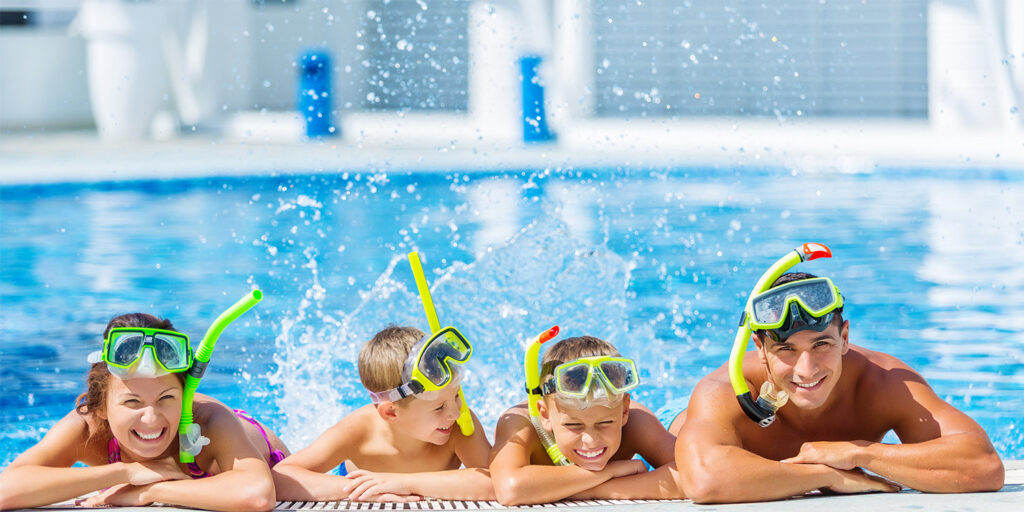
One of the surest ways to support your children’s swimming lessons is to make time to swim as a family. It has been proven that children who practice the skills they have learnt in their lessons progress faster and gain confidence quicker. We see this most often when children have been on holiday and have spent a week or two in the pool.
Though it can definitely support structured learning, family swim time needs to be FUN. It shouldn’t be centered around perfecting your little ones’ swimming strokes – it’s all about spending quality time together. Your children’s swimming skills will develop as a matter of course, and you will all find that you have a little more strength and stamina after a prolonged period of time in the water. But ultimately, the more time everyone spends in an environment where they can enjoy themselves, the more they will thrive!
Whilst swimming on holiday in the sunshine is a joy, you don’t have to go on holiday to enjoy family swimming time. We have lots of lovely swimming pools near us that are available for family hire.
For our swimmers who swim at Primrose pool, there’s also:
There’s even an outdoor pool in our little pocket of Essex, the Brightlingsea Lido, which is open from May to September.
What are cookies?
This website uses a technology known as cookies, which are small text files that a website can send to your browser, which is then stored on your hard drive. They are widely used in order to provide essential functionality of the website, and to help the site provide a better user experience.
What cookies are used on this website?
_ga: registers a unique ID that is used to generate statistical data on how the visitor uses the website. This cookie expires after 2 years.
_gid: This period shows the length of the period at which a service can store and/or read certain data from your computer by using a cookie, a pixel, an API, cookieless tracking, or other resources.
PHPSESSID: This period shows the length of the period at which a service can store and/or read certain data from your computer by using a cookie, a pixel, an API, cookieless tracking, or other resources.
tk_ai: This period shows the length of the period at which a service can store and/or read certain data from your computer by using a cookie, a pixel, an API, cookieless tracking, or other resources.
wp-settings-1, wp-settings-time-1: these DevStat technical cookie have duration of 1 year. WordPress uses this cookie to customize your view of admin interface, and possibly also the main site interface.
wordpress_logged_in_xxx, this DevStat technical cookie has session duration. WordPress uses this cookie to indicate when you’re logged in, and who you are, for most interface use.
wordpress_test_cookie, this DevStat technical cookie has session duration. WordPress sets this cookie when you navigate to the login page. The cookie is used to check whether your web browser is set to allow, or reject cookies.
cookieyes-consent: CookieYes sets this cookie to remember users’ consent preferences so that their preferences are respected on their subsequent visits to this site. It does not collect or store any personal information of the site visitors.
How can you turn off or disable the use of cookies on this website?
Generally, cookies will make your browsing experience better. However, you may prefer to disable cookies on this website and on others. The most effective way to do this is to disable cookies in your browser, although this may stop this website from functioning properly. For guidance on how to disable cookies and for any further information, visit www.allaboutcookies.org.